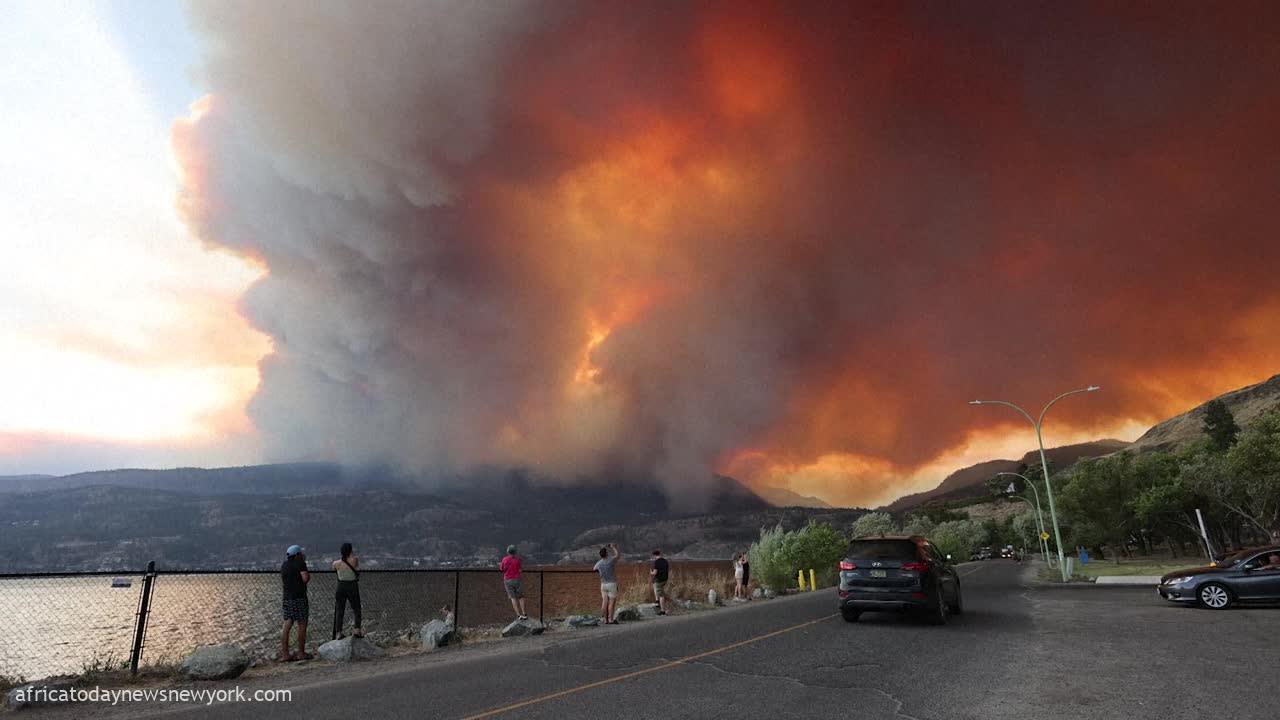Two urban areas in western Canada were threatened by roaring wildfires on Saturday, which prompted tens of thousands of people to flee over the span of just a few days.
The devastating fires in British Columbia and the Northwest Territories are just the latest in a summer of dramatic wildfires across the country that have left millions of acres scorched.
According to estimates, 19,000 people were evacuated from Yellowknife, the Northwest Territories capital, over 48 hours, its environment minister Shane Thompson said late Friday.
Africa Today News, New York reports that the city, home to some 20,000, was largely a ghost town following the largest ever evacuation from the region.
Winds have been fanning the wildfires towards Yellowknife, but Saturday there was some relief after overnight rain brought a sharp dip in temperatures, government weather forecasts showed.
Read Also: Canada’s PM, Trudeau And His Wife Announce Separation
More than 2,000 kilometers (1,200 miles) south in British Columbia, fire also bore down on Kelowna, a city of 150,000 people in the Okanagan Valley.
Blazes have already destroyed several properties in West Kelowna, separated by Okanagan Lake from its larger, eponymous neighbor.
Among them is the Lake Okanagan Resort, according to local media, which is known for having hosted high-profile politicians such as British prime minister Margaret Thatcher.
Exceedingly thick smoke meanwhile made it difficult for many in the area to breathe.
Overall, the number of people under evacuation order in British Columbia was 15,000, Emergency Management Minister Bowinn Ma said.
The blazes have caused ‘terrible loss,’ Prime Minister Justin Trudeau told reporters after meeting evacuees from Yellowknife as they arrived in Edmonton, Alberta, with no idea when they may return home.
Of the 19,000 who fled Yellowknife, ‘over 15,000 traveled out by road and 3,800 have been airlifted, with approximately 1,000 essential staff remaining in the city and surrounding area,’ environmental minister Thompson posted on X, the platform formerly known as Twitter.
Those crews were remaining to erect defenses from the flames, while water bombers have been seen flying low over the city, with the Canadian military also helping out.

